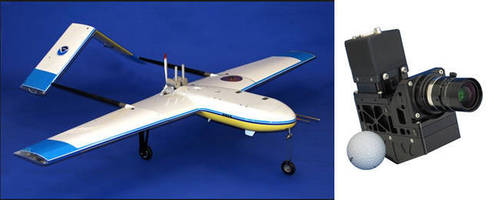Headwall Delivers Micro-Hyperspec® Sensors to Columbia University for Ocean Research

High-performance imaging sensors on small, commercial UAS will assess ocean and sea ice variability in Arctic zones
FITCHBURG, MAÂ – Headwall Photonics has delivered two high-performance hyperspectral imaging sensors to Columbia University as part of its Air-Sea-Ice Physics and Biogeochemistry Experiment (ASIPBEX). ASIPBEX is part of a larger international collaborative investigation of Climate Cryosphere Interaction with colleagues from Spain, Germany and Norway. This crucial remote-sensing project will use a high-endurance unmanned aircraft system (UAS) to investigate climatological changes present in the Arctic Ocean around Svalbard, Norway. The instrument payload comprises two Micro-Hyperpsec sensors; one will cover the Visible-Near-Infrared (VNIR) range of 400-1000nm while the other will cover the Near-Infrared (NIR) range of 900-1700nm. Together, the sensors will be crucial in detecting indicators of sea ice physics, solar warming and global carbon cycles.
"We chose the Headwall sensors for several reasons," stated Christopher Zappa, a Lamont Research Professor at Columbia's Lamont-Doherty Earth Observatory. "The very high resolution allows us to collect and process vast amounts of spectral and spatiColumbia UAS launchal data upon which our research and analysis depend." The wide field of view of the Headwall sensor combined with aberration-corrected optics also contributes to overall flight-path efficiency. "The UAS allows scientists to measure in places that typically are impossible to get to using ships or manned aircraft," continued Zappa. "This opens up the possibility for transformative understanding of the climate system. Since we're using a UAS, we depend on 'seeing' as much of the ocean surface as possible, minimizing any aberrations or unwanted artifacts along the edges of the field of view," concluded Zappa. The combination of Micro-Hyperspec and Headwall's advanced Hyperspec III airborne software allows for the successful collection, classification, and interpretation of the spectral data collected during each flight.
This particular deployment for the ASIPBEX project is fundamental to Headwall's strategy of advancing the science of remote sensing aboard small, commercial unmanned aircraft systems. "Hyperspectral represents a crucial payload for any manned or unmanned deployment," noted Headwall CEO David Bannon. "But significantly notable is that the UAS has become a 'go-to' platform. This means not only smaller and lighter sensors, but also integrated solutions that factor in everything from LiDAR and data-management to post-processing tasks such as ortho-rectification that our software can handle." Because the Micro-Hyperspec sensor uses high efficiency diffraction gratings in a concentric, optical design, imaging performance and signal-to-noise are both maximized. The patented optical design provides a package that is rugged and robust for airborne use in harsh environments such as the Arctic ocean.
About Headwall Photonics
Headwall Photonics is the leading designer and manufacturer of imaging sensors and spectral instrumentation for industrial, commercial, and government markets. Headwall's high performance spectrometers, spectral engines, and high performance diffractive optics have been selected by OEM and end-user customers around the world for use in critical application environments. As a pioneer in the development of hyperspectral sensors and imaging spectrometers, Headwall enjoys a market leadership position through the design and manufacture of patented spectral instrumentation that is customized for application-specific performance.
For information contact:
Mr. Chris Van Veen
Headwall Photonics, Inc.
978/353-4051
www.headwallphotonics.com
cvanveen@headwallphotonics.com
The Observatory for Air-Sea Interaction Studies (OASIS)
Led by Professor Christopher Zappa, the Observatory for Air-Sea Interaction Studies (OASIS) conducts research in a variety of fields focused on the oceanic and atmospheric boundary layers. These include wave dynamics and wave breaking, air-sea CO2 gas exchange, non-satellite remote sensing and boundary-layer processes. Affiliated with the Lamont-Doherty Earth Observatory (LDEO) and Columbia University, OASIS is involved in joint projects with the Polar Geophysics Group of LDEO, Yale University, the University of Heidelberg, the University of Connecticut, and the University of New South Wales and participated in various large multi-institution projects such as CBLAST-Low, GasEx, VOCALs, RaDyO, DYNAMO.
The group develops and deploys instruments including infrared, multispectral, and polarimetric cameras on different fixed and mobile platforms such as ships, aircrafts, buoys. The study areas range from laboratory wind-wave tanks, Biosphere2, to local rivers and estuaries, to shelf seas and polynyas, to open ocean from the poles to the equator.
For information contact:
Professor Christopher J. Zappa
Lamont Research Professor
Lamont-Doherty Earth Observatory
zappa@ldeo.columbia.edu
Headwall Photonics, Inc.
601 River Street
Fitchburg MA 01420




